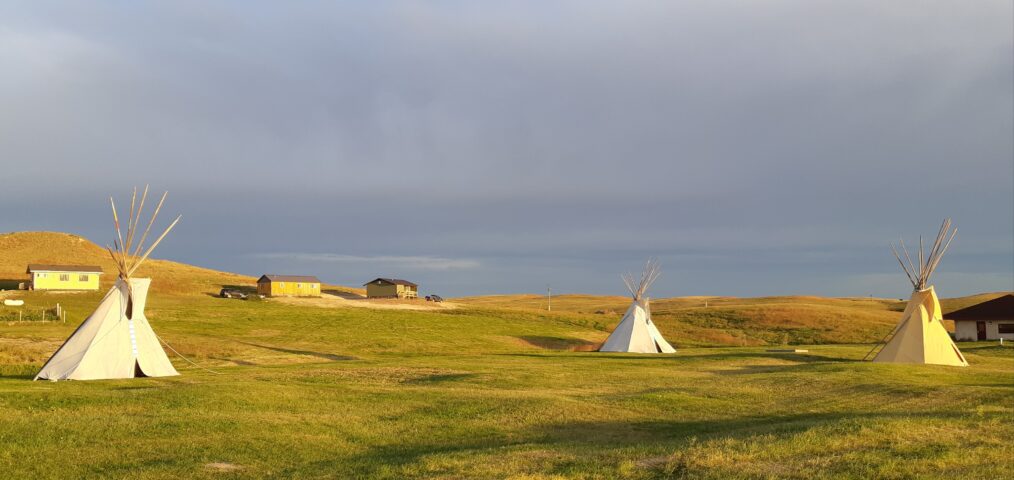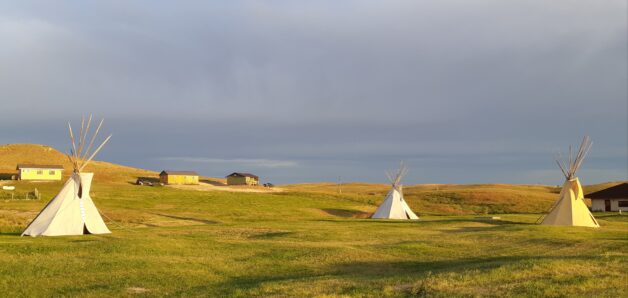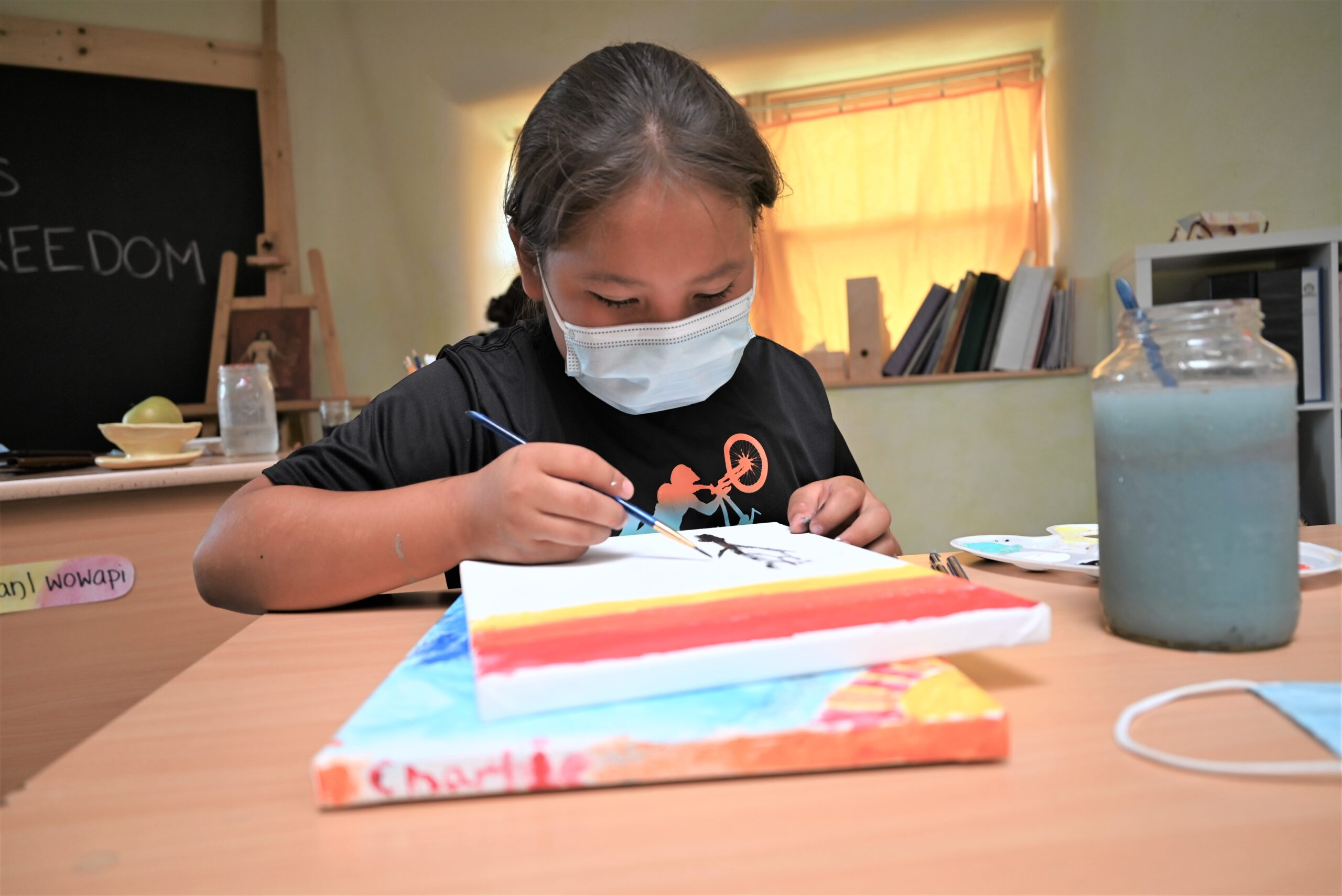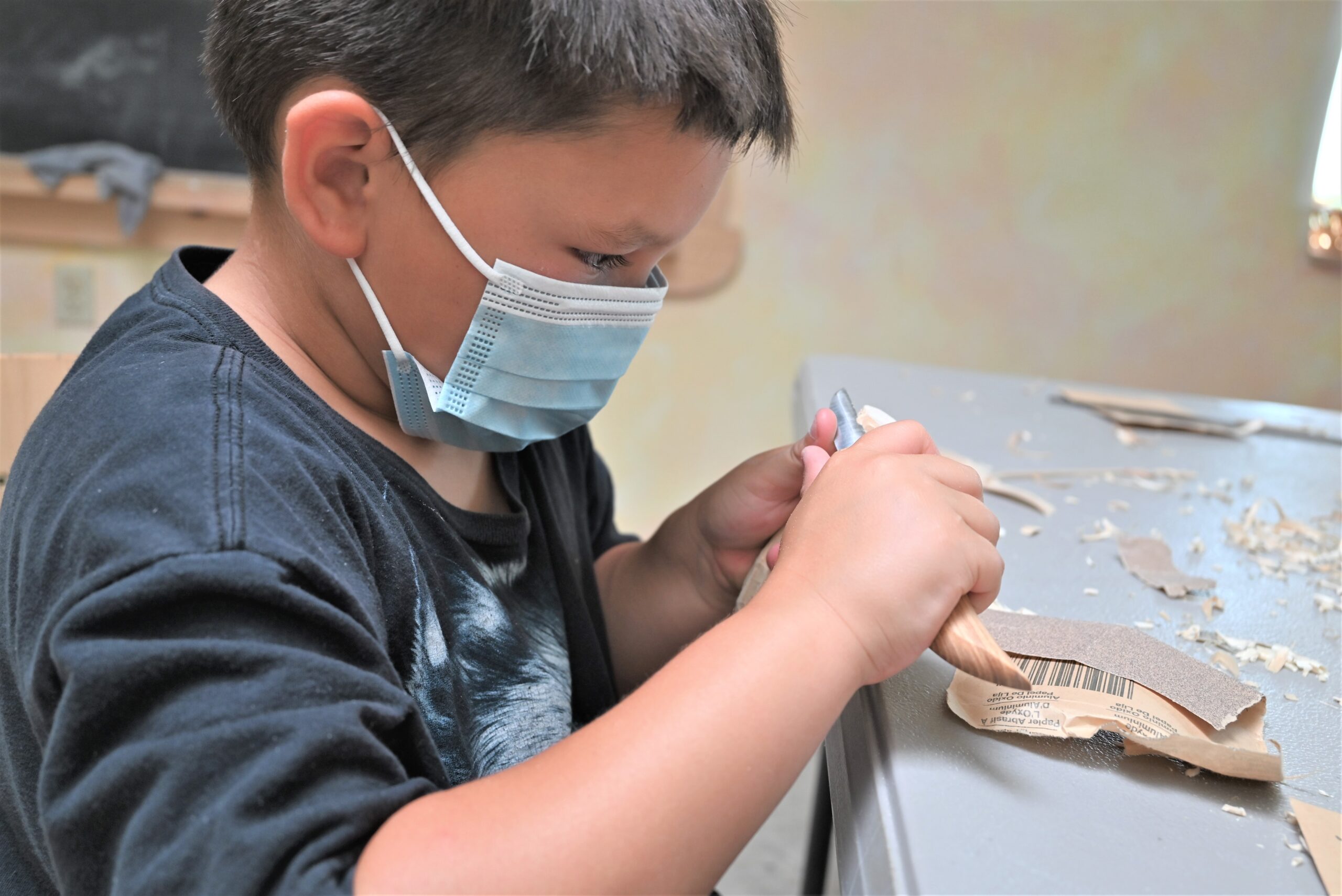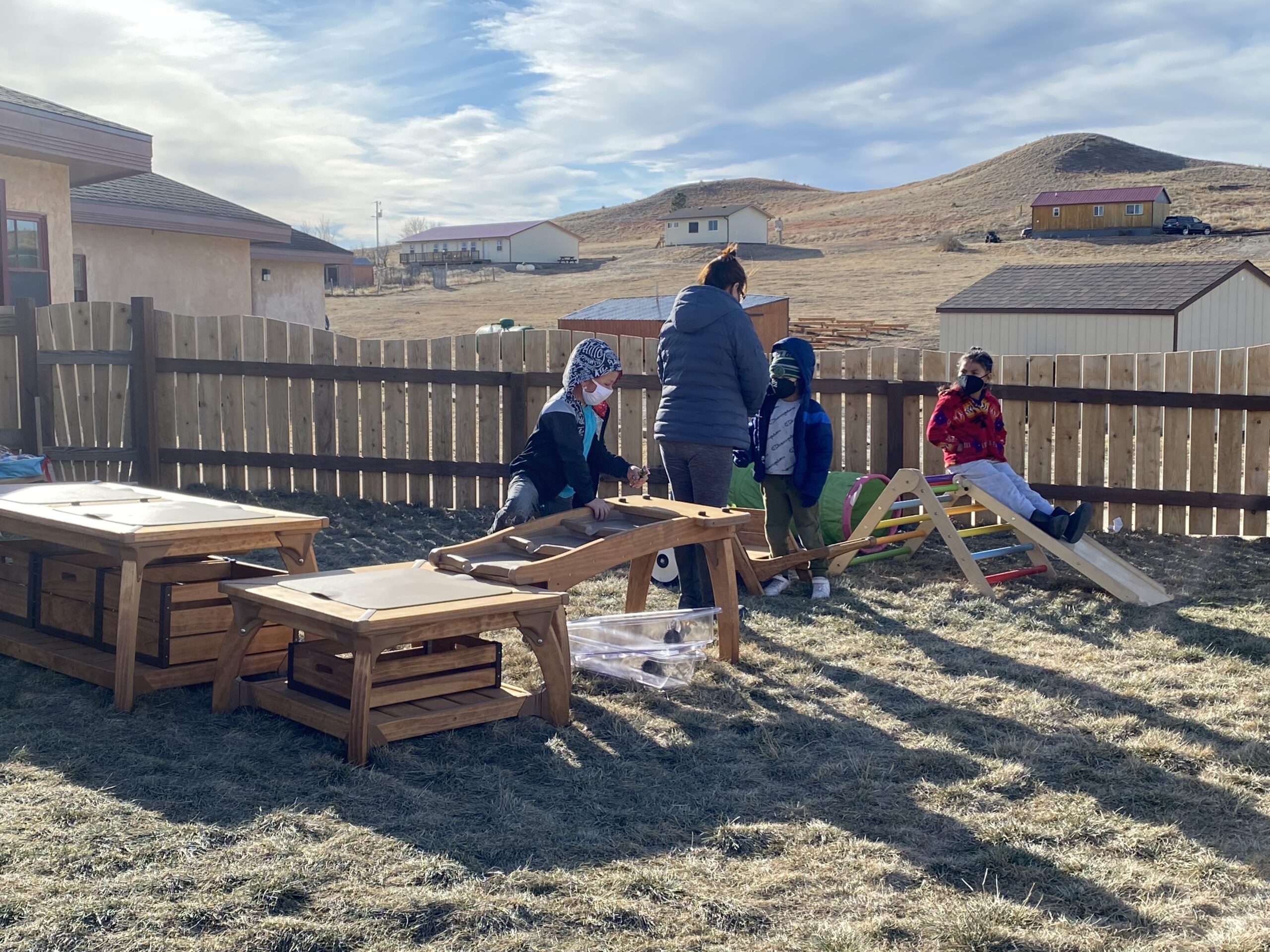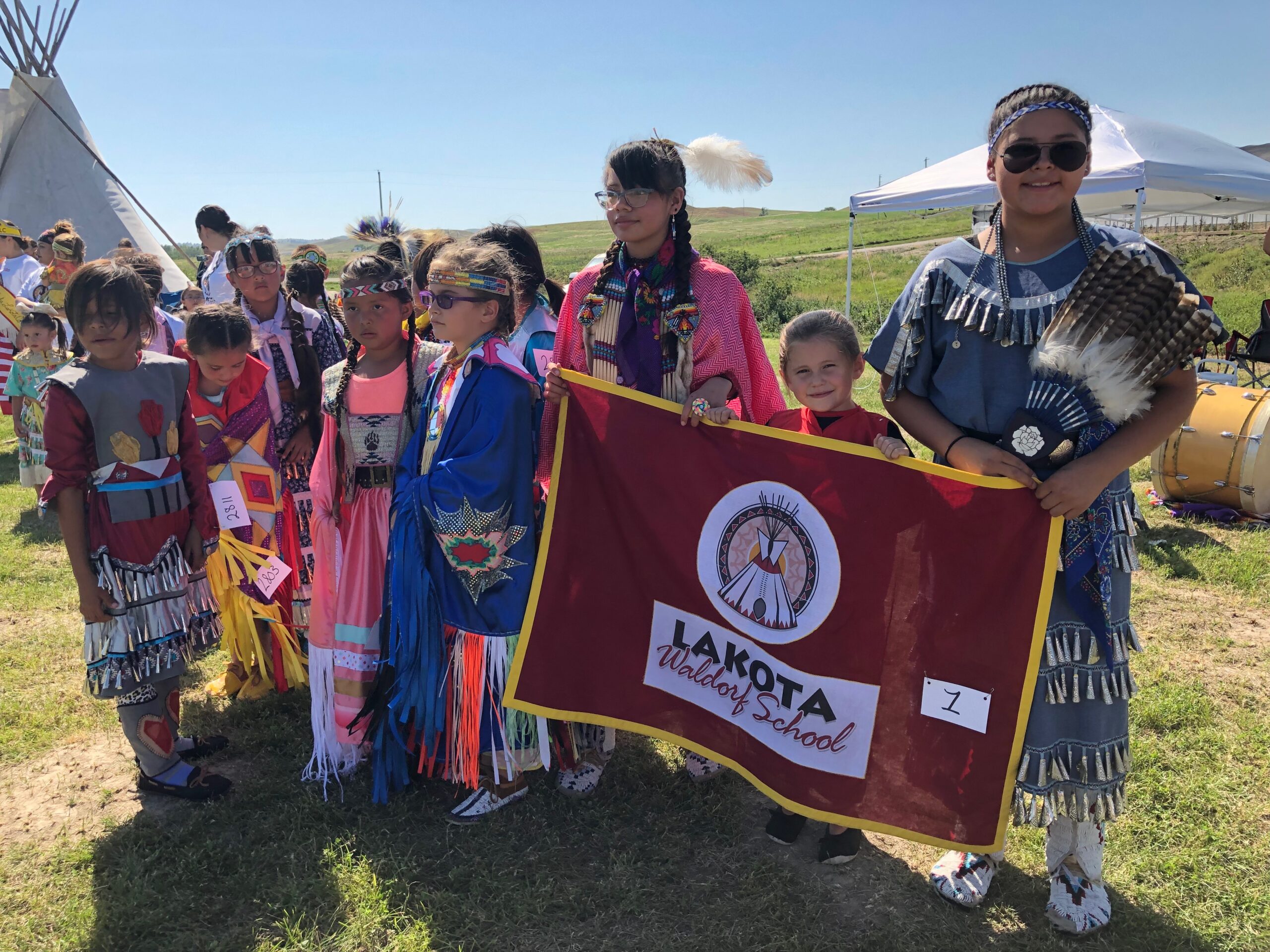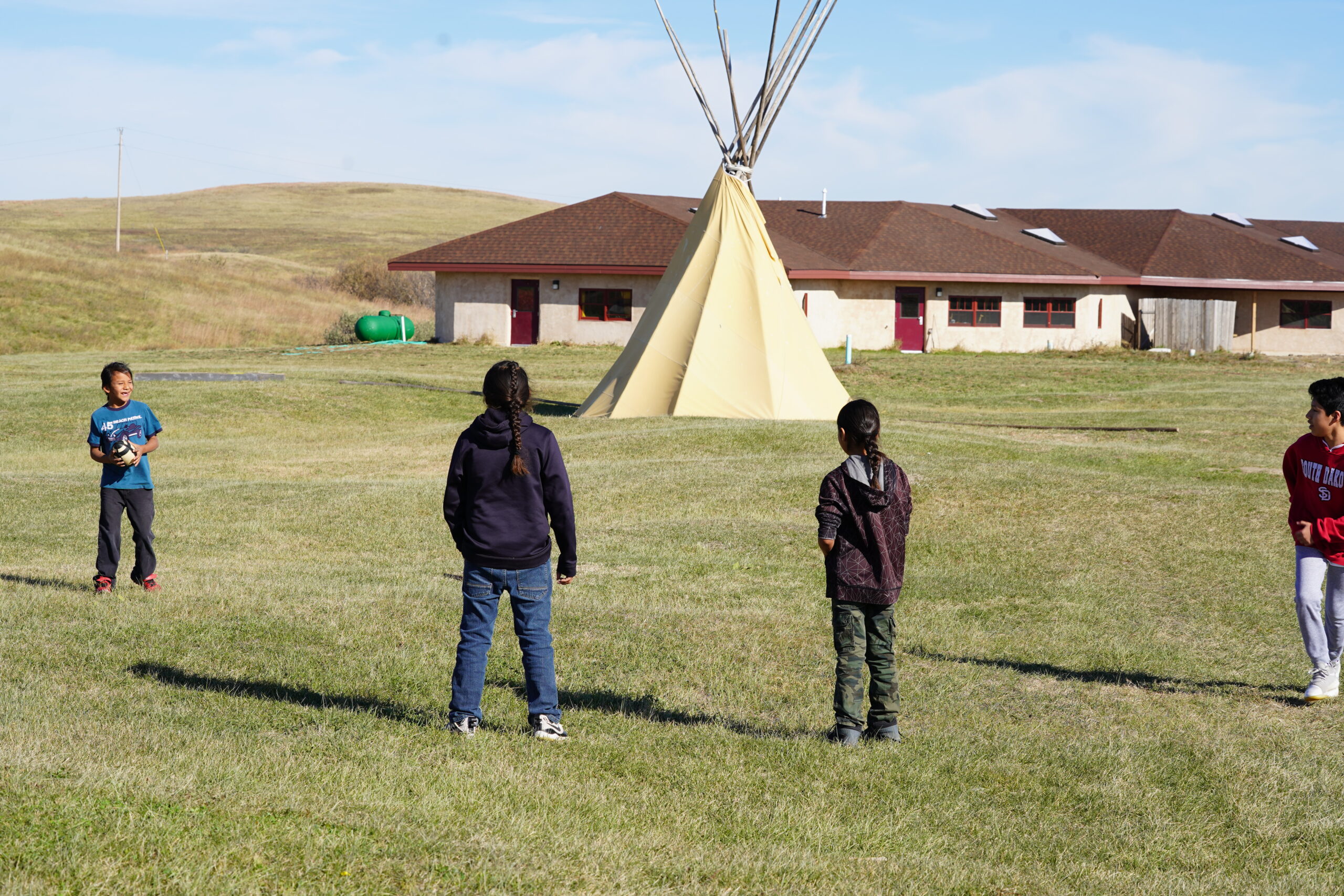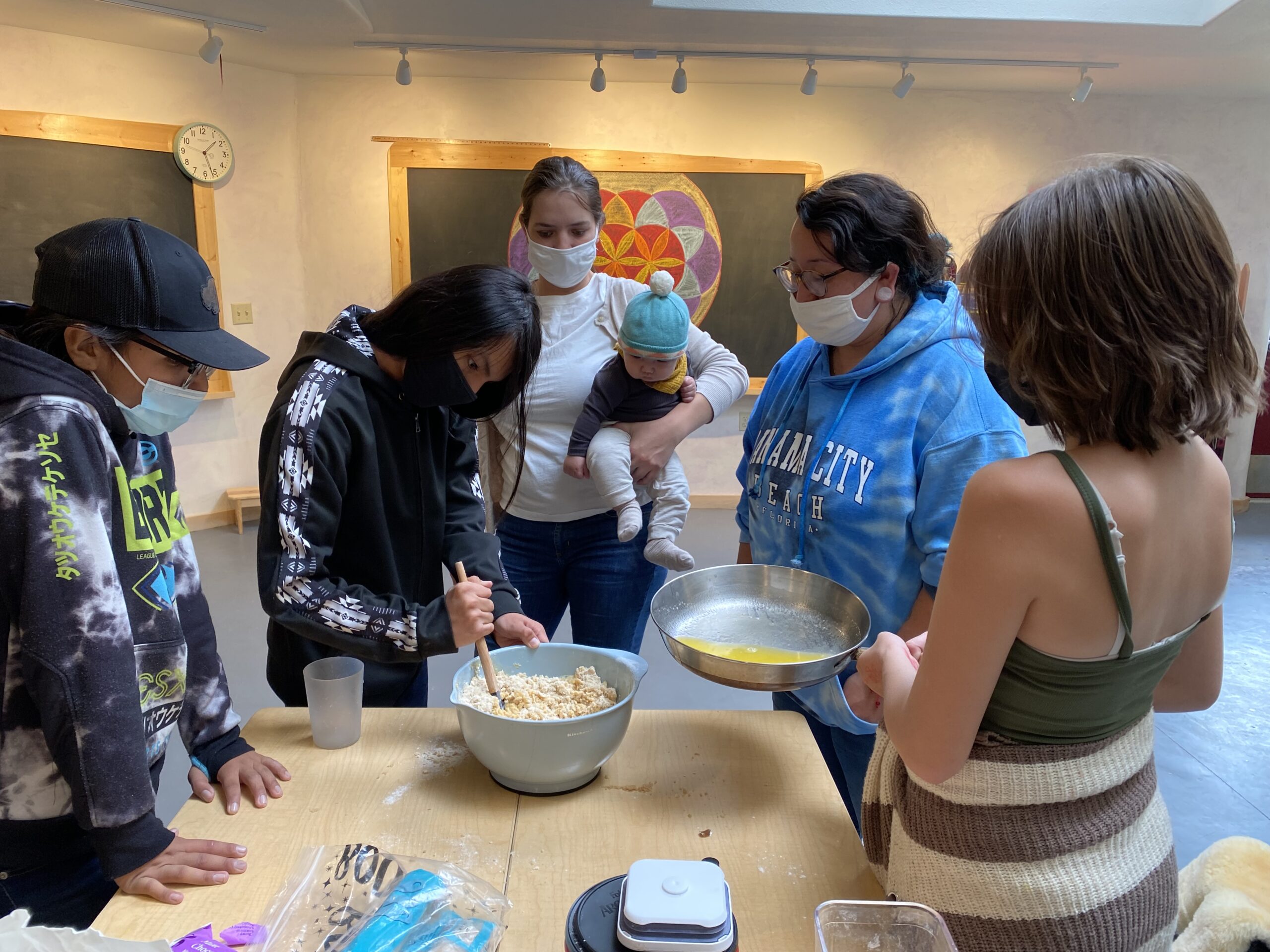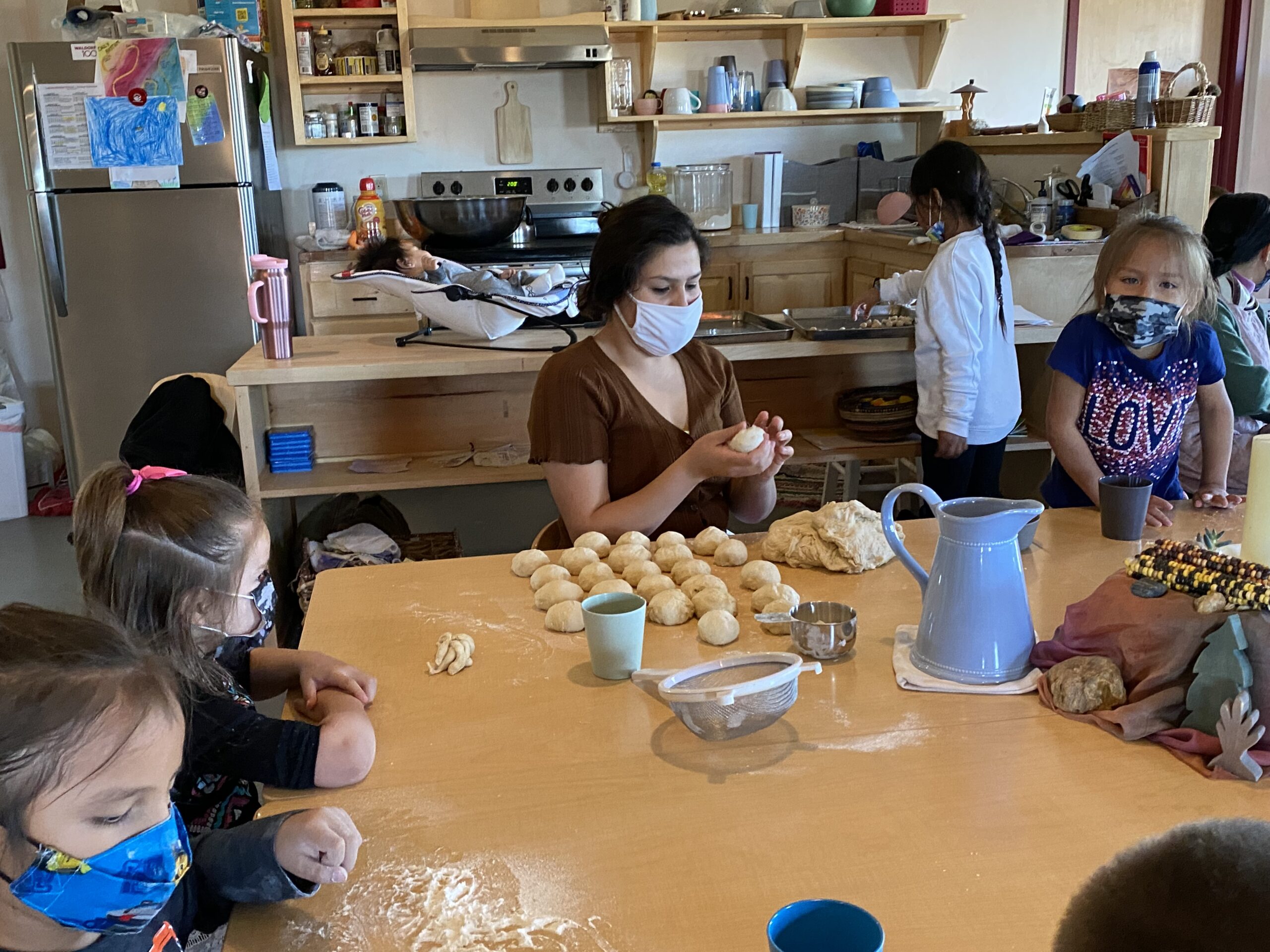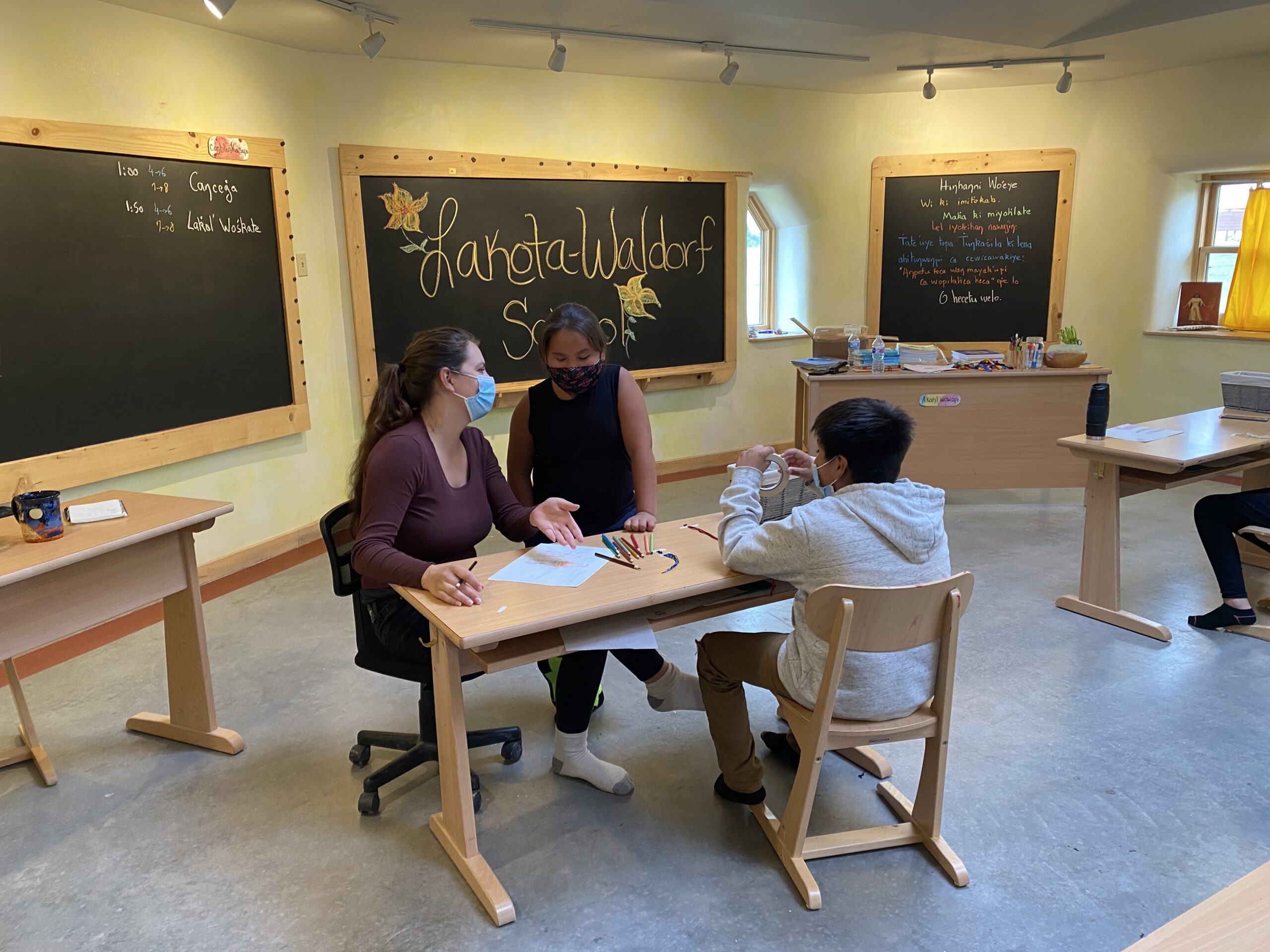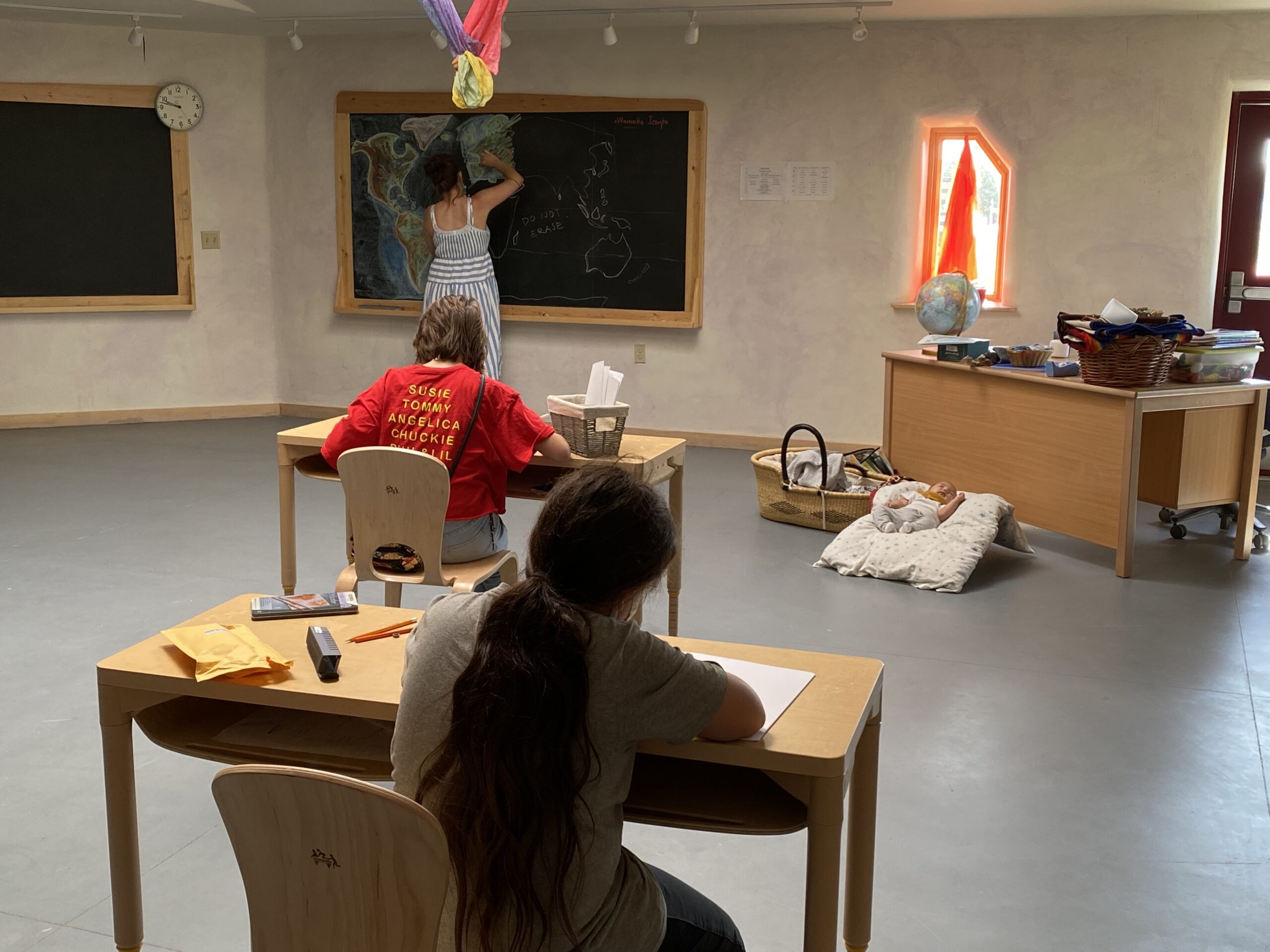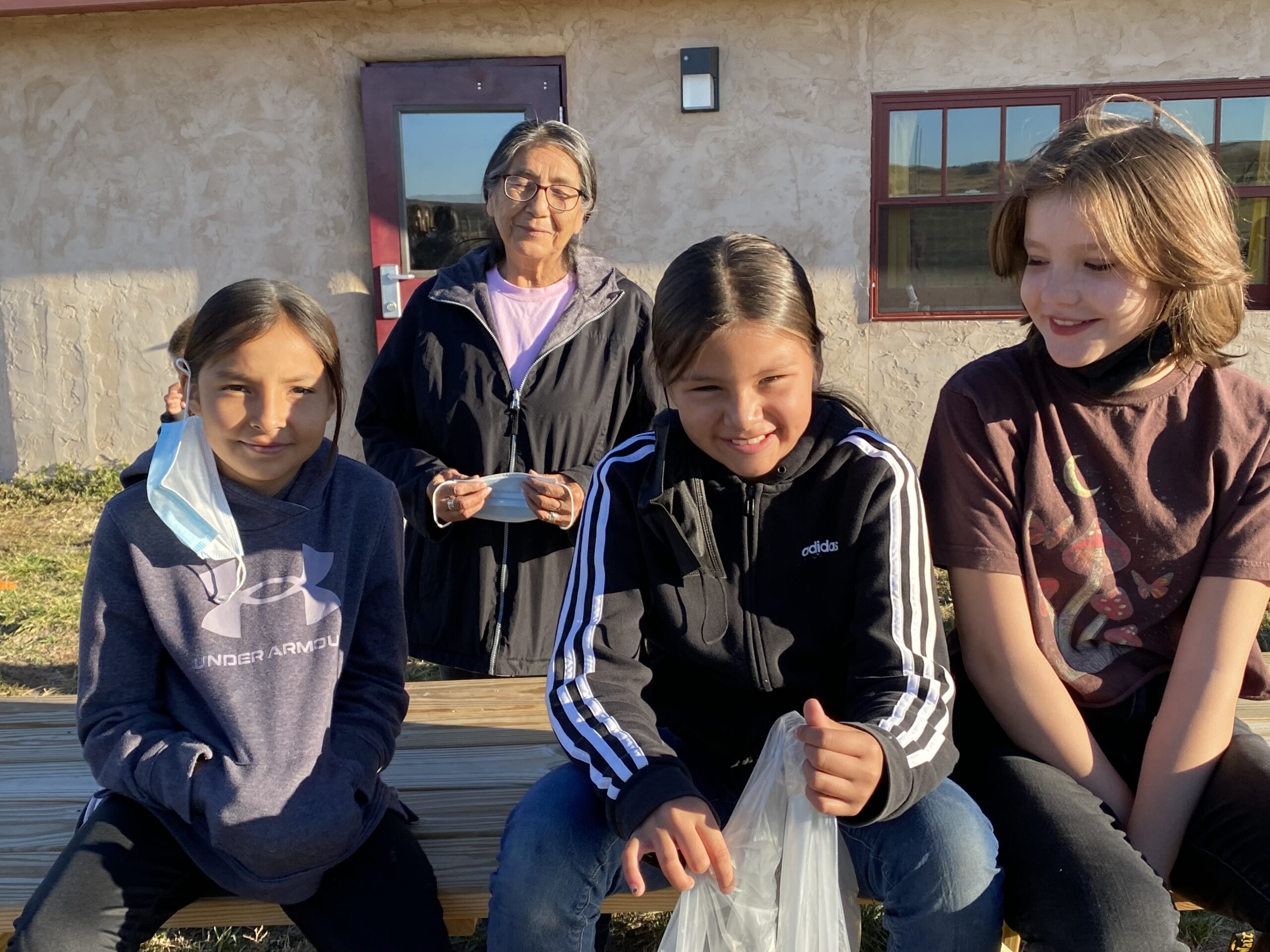Situated on the Pine Ridge Indian Reservation in South Dakota, the Lakota Waldorf School merges traditional education with the Waldorf pedagogy and teaching of the native Lakota language, culture and values, to give local children the best start in life while nurturing a deep connection with their ancestral land and roots.
The Onaway Trust have recently made a further donation to help fund the inspiring work and further expansion of this visionary school.
BACKGROUND
The Lakota Waldorf School is a tuition-free school for children from kindergarten to 8th Grade set on 40 acres of land on the Pine Ridge Indian Reservation in Kyle, South Dakota, home of the Oglala Lakota Tribe. Founded in 1993 by parents of the tribe, the school offers local children a unique and well-rounded education which entwines the holistic and forward-thinking features of the Waldorf pedagogy with teaching of the Lakota language and culture.
As the only Waldorf school situated on an Indian Reservation in the US, the school gives Lakota children the chance to benefit from an educational movement which integrates seamlessly with the values and teachings of their own native culture. This is a unique opportunity which most Native American families cannot afford due to high rates of unemployment and poverty among their communities.
However, thanks to the ongoing generous grants and donations of trusts and individuals from across the United States and Europe, the Lakota Waldorf School is able to offer a tuition-free education to all their students, something which they are now campaigning for all Waldorf schools in the US to offer to Native American pupils. The school believes that, in recognising the original owners of the land and the persecution these tribes have faced in the past, this is a vital first step in reconciling the historical conflicts between native peoples and US settlers.

WALDORF EDUCATION
Started by Austrian scientist and philosopher Rudolf Steiner in 1919, Waldorf is a global educational movement comprising an ever-growing group of non-sectarian schools which, although independent, all share a common philosophy and method of teaching. Waldorf schools depart from the mainstream focus on standardised testing, rote memorisation and ranking of students, and instead place emphasis on the three key ways in which a child learns and experiences the world: thinking, feeling and doing, or using their head, heart and hands.
The schools integrate aspects such as creativity, imagination, spirituality and art into a developmentally-appropriate curriculum which covers all standard school subjects to allow the children to succeed academically and later in life, while also nurturing their personal development on an emotional and spiritual level. Waldorf education encourages the development of a strong moral character, cognitive flexibility, emotional intelligence and a close connection to nature, and this tactile and holistic approach to education integrates perfectly with the principles the Lakota community value in their education.
“Knowledge is rooted in all things - the world is a library.”
Lakota proverbSCHOOL CURRICULUM
The Waldorf pedagogy endorses the inclusion of artistic, physical and cultural activities in lessons, which integrates seamlessly with the school’s Lakota language and culture programme. Standard subjects, from maths and science to geography, are brought to life with dance, singing, games and poetry. The children are able to explore their environment with hands-on activities such as painting, gardening, pottery and beeswax modelling, as well as Lakota traditions including beadwork, flute playing, building tipis, archery, and the telling of indigenous stories and legends. Introducing the children to traditions such as pow wow festivals and daily Lakota rituals from an early age not only instils within them a strong cultural identity, but it also helps to ensure the longevity of the Lakota culture, which the school hopes their alumni will honour and practise throughout their lives and pass down to future generations.
This is especially important for the future of the Lakota language, which is now classified by UNESCO as vulnerable to extinction. Currently only 4% of the Oglala Lakota Tribe speaks their native language fluently and this number drops to only 1% for those aged 10 or under, with most speakers over 70 years old. For this reason, the school makes it a priority that their language teachers are available to every child, from Kindergarten to 8th Grade, and that the language is both taught directly and weaved into lessons as much as possible, allowing children to develop an interest in and use the language with their peers and providing them with the basis to develop fluency.
Against a backdrop of historical and actual discrimination, marginalisation and persecution of indigenous cultures and communities, being surrounded by such a positive representation of the Lakota culture empowers the children and provides them with a sense of pride in their identity and origins. The Lakota language programme bestows the students with the positive attitude that is so essential to the long-term survival of a language, and as one of the most important manifestations of a culture, the stability of the language should in turn help to ensure the continuity of Lakota traditions and identity as a whole.
The garden and healthy meals programme is another integral aspect of the school’s curriculum, which strives to fight against the high rates of poverty and chronic illness in the area by providing all students daily with a healthy breakfast, lunch and snack free of charge. This commitment continued throughout the Coronavirus pandemic thanks to the heroic efforts of the school’s bus drivers who personally delivered the meals to all the children while they were forced to isolate at home. Some of the fruit and vegetables used are grown by the staff and children themselves in the school’s organic garden, ensuring their high quality and nutritional value and saving the staff a 3-hour round trip to buy food.
This is a vital resource considering that 90% of the community’s food has to be shipped in to the reservation due to its poor location. In addition, the garden and healthy meals programme overlaps with the language programme, meaning that children can engage with the Lakota language and learn important everyday terms while cooking and gardening, as well as discovering native plants and ecology through the lens of Lakota. As a result, the students have produced their own Lakota – English dictionary featuring 100 edible, medicinal and ceremonial plants, complete with colourful illustrations.
The children’s close connection to nature and respect for the Earth are also nurtured through the teaching of eco-friendly practices. The school aims to reduce their environmental impact and prioritise sustainability in every way possible, including maintaining a plastic-free campus, using eco-friendly cleaning supplies, recycling, and composting, in addition to growing organic produce and planting native trees and plants in the grounds. These practices set a good example to the children, and with this eco message being reinforced in their lessons, they grow to become environmentally-conscious citizens who can set a new precedent in their own community and beyond.
“We know that we are not superior to nature. We are one.”
Celestine Stadnick, LWS teacherTHE PINE RIDGE RESERVATION
At 2.1 million acres, the Pine Ridge Reservation is the second largest Indian reservation in the country and is one of nine located in South Dakota. The Lakota Waldorf School is situated in Oglala Lakota County which, as one of the poorest counties in the United States, is an area which sadly battles with many social problems. The adversities now faced by local tribes in large part stem from the colonisation of the United States and the subsequent discrimination and marginalisation of the indigenous people, who were forced off their lands to live in unfamiliar areas poorly suited to their needs and where they were unlikely to thrive.
In the present day, 85% of the Pine Ridge population is unemployed and 60% live below the poverty line. The region has very high suicide, infant mortality and high school dropout rates and, as a result of high incidences of chronic illness, alcoholism, drug abuse, and homelessness, the region also has the lowest life expectancy in the country, at only 52 years for women and 48 for men.
Although many of the children come from homes facing such hardship, the Lakota Waldorf School stands as a shining beacon of hope for the future of this community, providing an alternative path for the next generation by giving them the academic knowledge to succeed in the wider world while also, crucially, embracing their native culture, nurturing their connection with nature in order to become responsible custodians of the environment, and supporting their development as well-rounded individuals who are creative, spiritual, compassionate and possess a strong moral compass.
“The ones that matter the most are the children.”
Lakota proverbTHE FUTURE
The Onaway Trust has a long-term close relationship with the Lakota Waldorf School, having provided seed funding at the very start of their journey. Now as a very successful and well-established school, Onaway continues to provide donations to support the LWS’s positive impact on children’s lives and the wider Lakota community. In 2019, the Onaway Trust offered a grant of £28,000 ($35,099) to fund the full-time employment and training of a new school teacher, Dottie Coleman-Witt. Dottie went on to teach the 7th and 8th Grade class independently, and in 2020 one of her own students became the first child at the school to graduate from 8th Grade. As a Lakota tribal member herself, Dottie was able to closely relate to her students, as well as setting them an excellent example of how to celebrate their native culture.
In 2021, The Onaway Trust provided the school with a further unrestricted grant of $2000 as part of a Giving Tuesday appeal. Grants such as these not only go towards the running of the school, paying the employees’ wages and allowing the school to continue to waive all of its students’ fees, but may also be dedicated to specific projects. During the last few years, the school has been working hard on its Campus Expansion Plan and has now completed Phases 1A and 1B, which included the building of three new classrooms, a bathroom and a utility room, in addition to purchasing a larger school bus and appointing two new teachers.
The school is now working on securing funding for Phase 2, which envisages the creation of administration and community areas on the school grounds, including offices and meeting rooms for the staff, a professional kitchen, student cafeteria and a coffee shop for the community. In line with their eco-friendly credentials and the standards of the existing campus, these buildings will be created using green construction methods and non-toxic materials, including the use of solar panels, passive solar heating and cooling, skylights, and straw bales in the walls.
This continued campus expansion will be an invaluable addition to the school and its facilities and would increase capacity from 60 to 80 students, giving more indigenous children the opportunity to reap the benefits of a tuition-free education tailored to their needs. However, with the whole project estimated to cost over $2.1 million, none of these improvements would be possible without the ongoing funding and donations of those who support the school and their mission to create a safe, nurturing and inspiring environment for such a deserving community.
To find out more about the Lakota Waldorf School including how to donate, please follow the link below.


